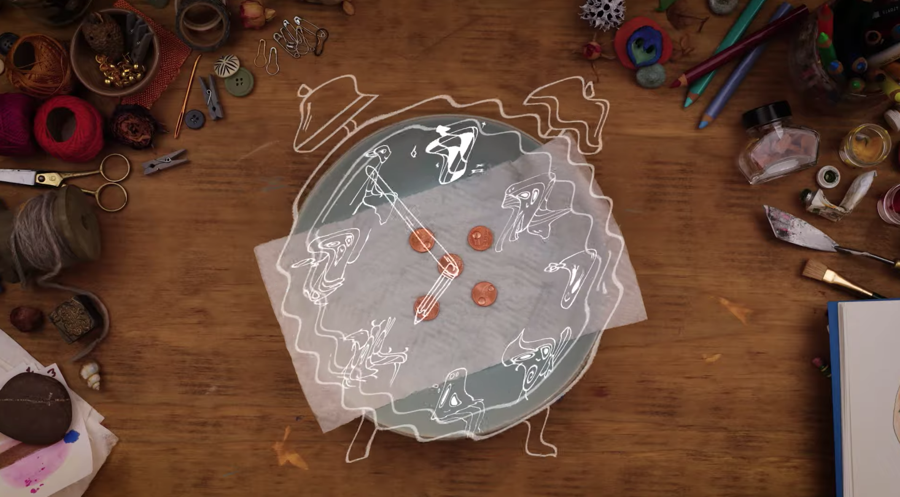A newly minted penny is a sight to behold. Its surface gleams with a brilliant shine, almost like a coin from a pirate’s treasure chest. The design on the front, typically featuring Abraham Lincoln’s profile, is crisp and well-defined. The copper coating feels smooth and pristine to the touch, with sharp edges and a sense of novelty that comes from being unweathered.
But pennies don’t stay bright copper for long. They get dirty, grimy, and dented from use, and develop a dull brown coating over time. But pennies also turn green. Why?
This MetKids science experiment video from New York’s Metropolitan Museum of Art shares how vinegar and salt can age older unwashed pennies 50 years in just 24 hours.
Be sure to record what your penny looks like before the experiment, then follow the video instructions. What do the pennies look like the next day? Have they changed color? Draw the pennies’ appearances again, and if you handle the pennies, wear gloves.
“Copper coated pennies can react with the air and other elements to get a bluish green substance called verdigris. Here, the vinegar and salt helped us fast forward this reaction.”
Exposure to the elements also turned the copper-clad Statue of Liberty green. Via The New Yorker:
“The Statue of Liberty’s exterior is made of copper, and it turned that shade of green because of oxidation. Copper is a noble metal, which means that it does not react readily with other substances. The Statue’s copper is only three-thirty-seconds of an inch thick and unusually pure. A copper magnate named Pierre-Eugène Secrétan donated most of it—the sculpture required about a hundred tons. Secrétan probably took it from a mine in which he held an interest on an island off the coast of Norway. Later, he was ruined in the copper crash of 1889.
“At the Statue’s unveiling, in 1886, it was brown, like a penny. By 1906, oxidation had covered it with a green patina. The thin layer of oxidation that covers copper (and bronze, an alloy made mostly of copper) can preserve the metal for centuries, even millennia, as shown by objects from the ancient world. “
Watch more MetKids videos on YouTube or on TKSST.
Watch these related videos next:
• Amber cleans a copper coin with salt and vinegar
• The surprising interactions between copper and neodymium magnets
• How to Make the World’s Simplest Electric Toy Train
Plus: Ancient Greek and Roman artworks were brightly painted: How do we know?
Curated, kid-friendly, independently-published. Support this mission by becoming a sustaining member today.




